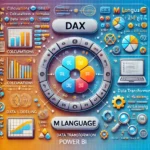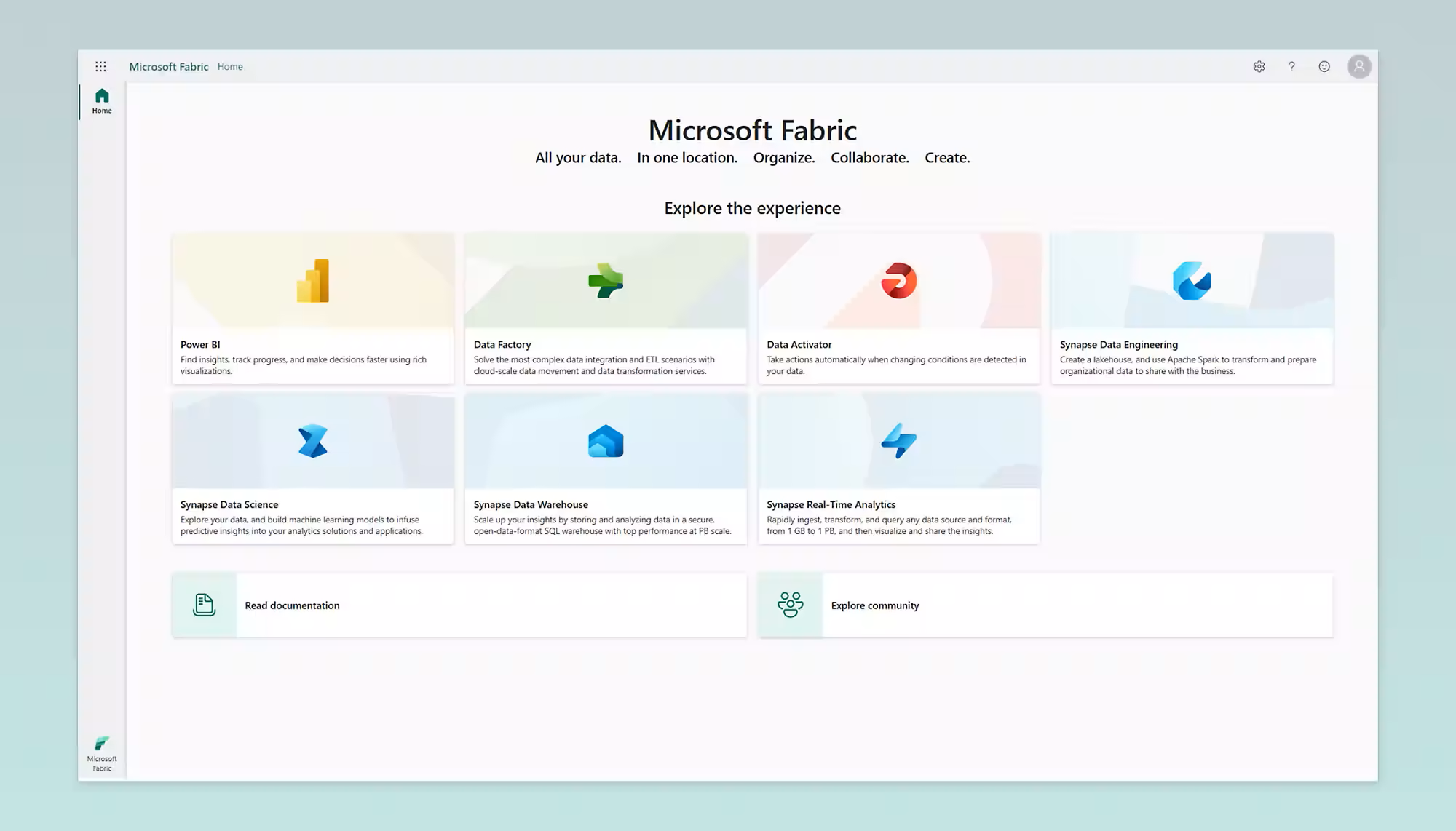Data Insights with Microsoft Fabric: In today’s data-driven landscape, harnessing the power of analytics is crucial for informed decision-making and business growth. Microsoft Fabric emerges as a pivotal tool in this context, offering a comprehensive platform that seamlessly integrates various components for robust data analysis. Built on the robust foundation of Azure, Microsoft’s renowned cloud computing platform, Fabric not only ensures reliability and scalability but also enhances data processing capabilities. In this article, we will delve deep into the transformative potential of Microsoft Fabric, highlighting its key features and benefits that empower users to derive meaningful insights from their data.
What is Microsoft Fabric?
Microsoft Fabric is a robust and scalable platform that provides a unified experience for data analysis. It brings together various components, including data storage, processing, and analytics, into a single ecosystem. Fabric is built on Azure, Microsoft’s cloud computing platform, which ensures reliability, scalability, and security for data analysis tasks.
Key Features and Benefits
Data Integration
Microsoft Fabric offers seamless integration with various data sources, both on-premises and in the cloud. It supports a wide range of data formats, making it easy to ingest and integrate data from different systems, databases, and applications.
Data Transformation and Preparation
Fabric provides powerful tools for data cleansing, transformation, and preparation. With its intuitive interface and built-in connectors, users can easily perform data wrangling tasks, ensuring that the data is in a suitable format for analysis.
Advanced Analytics
Fabric offers a rich set of tools and capabilities for advanced analytics. Users can leverage familiar tools like SQL and R to perform complex queries and statistical analyses. Additionally, Fabric supports machine learning algorithms, enabling users to build predictive models and uncover hidden patterns in the data.
Scalability and Performance
Microsoft Fabric is designed to handle large volumes of data and perform computations at scale. It leverages the underlying power of Azure’s infrastructure, allowing users to process massive datasets quickly and efficiently.
Collaboration and Sharing
Fabric facilitates collaboration among data analysts and stakeholders. It provides features for sharing data, insights, and analysis results, ensuring that everyone has access to the latest information and findings. Collaboration features include sharing data models, dashboards, and reports with colleagues, as well as integrating with other Microsoft productivity tools like Power BI and Excel.
Microservices vs. Containers: Unpacking the Distinctions
Getting Started with Microsoft Fabric:
To start using Microsoft Fabric for data analysis, follow these steps:
- Step 1: Set up Azure Account: If you don’t have an Azure account, sign up for one at azure.microsoft.com. Azure provides a range of options, including a free tier and pay-as-you-go plans.
- Step 2: Provision a Fabric Environment: In the Azure portal, create a new Fabric environment. Specify the desired configuration, such as the size of the cluster and the storage capacity. Azure will handle the provisioning and setup process.
- Step 3: Ingest and Prepare Data: Connect Fabric to your data sources, whether they are on-premises or in the cloud. Use Fabric’s data connectors and transformation tools to ingest and prepare the data for analysis.
- Step 4: Perform Data Analysis: Leverage Fabric’s analytics capabilities to explore, analyze, and visualize the data. Utilize SQL queries, R scripts, or machine learning algorithms to gain insights and generate meaningful reports.
- Step 5: Share Insights and Collaborate: Share your analysis results with stakeholders by creating reports, dashboards, or interactive visualizations. Collaborate with team members by granting them access to the Fabric environment and sharing relevant artifacts.
Microservices vs. REST API: Unraveling the Differences
Integration with Azure Services
Microsoft Fabric seamlessly integrates with various Azure services, expanding its capabilities for data analysis. For example:
Azure Data Lake Storage
Fabric can directly access and analyze data stored in Azure Data Lake Storage, a highly scalable and secure data lake solution. This integration enables efficient data processing and analysis without the need for data movement or duplication.
Microservices vs. Spring Boot: Choosing the Right Path
Azure Databricks
By combining Microsoft Fabric with Azure Databricks, a collaborative analytics platform, users can leverage the power of Apache Spark for large-scale data processing and machine learning tasks. This integration empowers data scientists and analysts to perform complex computations and build sophisticated models.
Azure Machine Learning
Fabric can integrate with Azure Machine Learning, a comprehensive platform for building, deploying, and managing machine learning models. This integration allows users to seamlessly incorporate machine learning capabilities into their data analysis workflows, enabling predictive analytics and automated decision-making.
Microservices vs. Web Services: Unpacking the Differences
Advanced Analytics and AI Capabilities
Microsoft Fabric goes beyond traditional data analysis by offering advanced analytics and AI capabilities. Here are some notable features:
Natural Language Processing (NLP)
Fabric includes NLP capabilities, enabling users to extract insights from unstructured text data. This feature allows sentiment analysis, named entity recognition, and keyword extraction, which are particularly useful for customer feedback analysis, social media mining, and text-based insights.
Microservices vs. SOA: Unraveling the Architectural Puzzle
Cognitive Services Integration
Fabric can integrate with Azure Cognitive Services, a suite of AI-powered APIs that provide pre-built models for vision, speech, language, and more. This integration allows users to leverage pre-trained models for tasks like image recognition, sentiment analysis, and language translation within their data analysis workflows.
Automated Machine Learning (AutoML)
With AutoML capabilities, Fabric simplifies the process of building machine learning models. Users can easily train and deploy models without extensive coding, accelerating the model development process and enabling users with varying levels of technical expertise to harness the power of machine learning.
Security and Governance
Microsoft Fabric prioritizes security and provides robust governance features for data analysis. Key aspects include:
Data Encryption and Compliance
Fabric ensures data security by encrypting data at rest and in transit. It also supports compliance with industry-specific regulations such as GDPR, HIPAA, and SOC 2, making it suitable for organizations dealing with sensitive data.
Role-Based Access Control (RBAC)
Fabric offers RBAC capabilities, allowing administrators to control access to data, analysis environments, and specific features. This ensures that only authorized individuals can view and manipulate data, maintaining data privacy and security.
Data Lineage and Auditing
Fabric provides auditing and data lineage features that track data movement and transformations. This functionality enhances data governance and allows organizations to trace the origins and transformations applied to their data, ensuring transparency and accountability.
Microsoft Fabric is a powerful platform for data analysis, offering a unified environment that enables users to extract valuable insights from their data. Its integration capabilities, advanced analytics tools, scalability, and collaboration features make it a versatile solution for organizations seeking to unlock the full potential of their data. By following the steps outlined in this guide, you can embark on a data analysis journey with Microsoft Fabric and drive data-informed decision-making within your organization.







